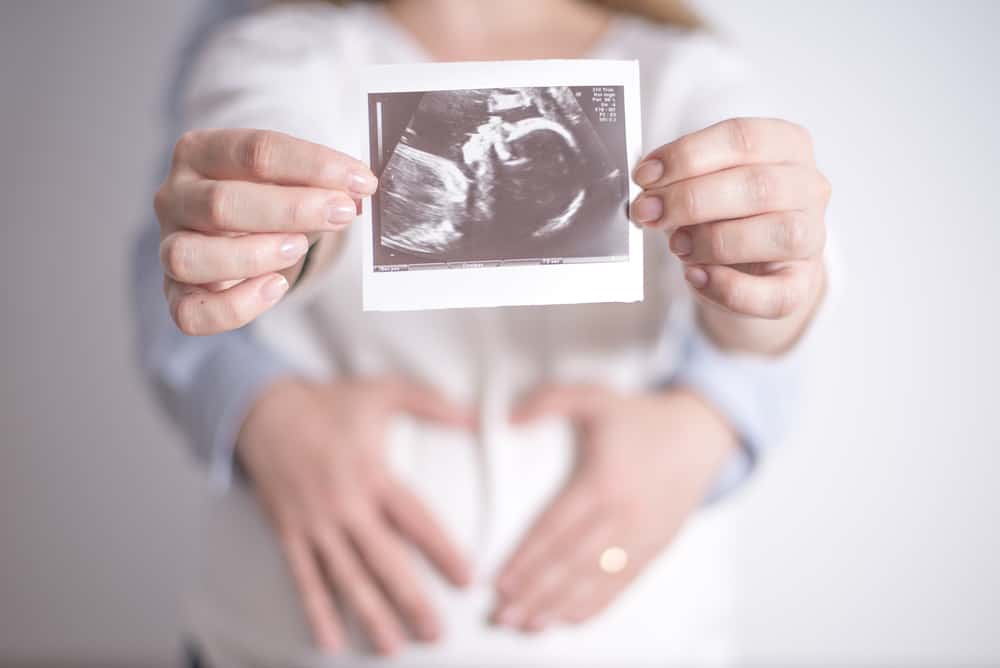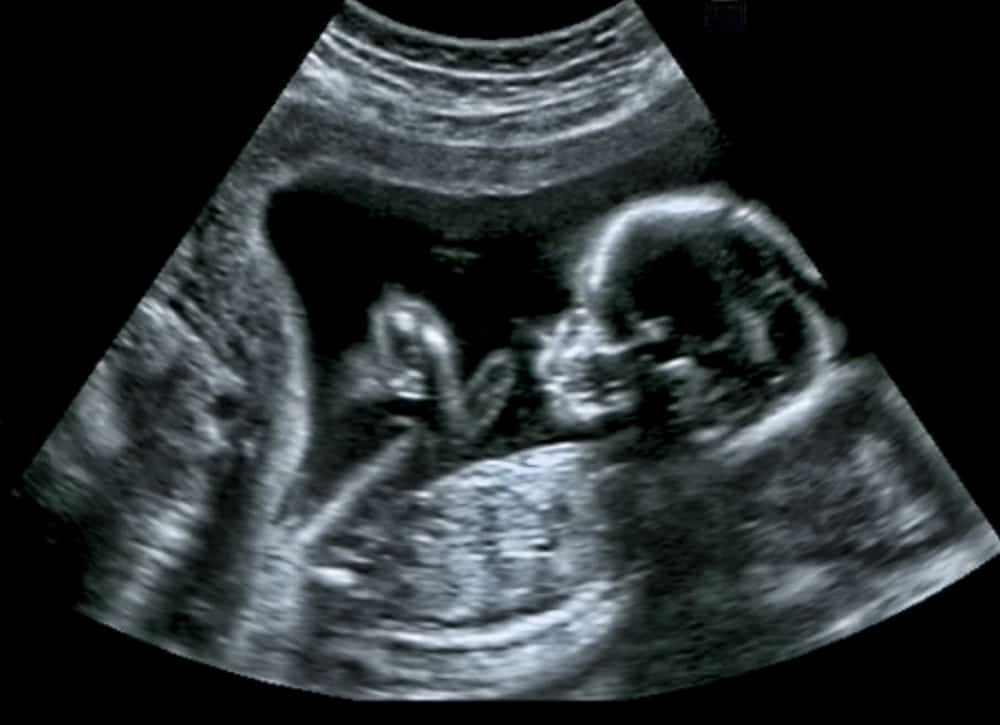The Ramzi Theory a method that’s said to predict the gender of a fetus from an early ultrasound scan. From just six weeks into a pregnancy, this theory states that it’s possible to determine whether you’ll be having a girl or a boy simply by checking the location of the placenta inside the uterus. If it’s on the right, you’ll have a boy. If it’s on the left, you’ll have a girl. It’s said that this method is around 97% accurate.
Unfortunately, it’s not quite that easy! While the Ramzi Method sounds like a great way to work out as early as possible what sex of baby you’ll be having, it isn’t actually effective. There’s only one way to confirm the gender of a fetus, and that’s during a structural ultrasound scan that occurs at 16-20 weeks in most cases.
- Why Do Women Use the Ramzi Theory to Predict Their Baby’s Sex?
- Who Came up With the Ramzi Theory?
- Is Ramzi Theory Accurate?
- How Does the Ramzi Theory Work?
- When Can the Ramzi Theory Be Used?
- Which Side of the Uterus Is the Placenta On?
- Will the Ramzi Theory Work if I’m Having Twins?
- Will It Matter if I Ovulated From the Left or Right Ovary?
- Can I Use the Ramzi Theory at a Structural Ultrasound Scan?
- Should I Try the Ramzi Theory?
- There Is No Scientific Basis to the Ramzi Theory
- How Can I Determine the Sex of an Embryo?
- Final Thoughts
Why Do Women Use the Ramzi Theory to Predict Their Baby’s Sex?
There are several reasons why women like to find out whether they’ll be having a boy or a girl. In most cases, curiosity just gets the better of them, or they’re keen to start decorating their nursery and buying baby clothes and want to know which colors to choose.
However, there are more serious reasons to find out early. If you’re concerned that your baby could suffer from a genetic or congenital disorder, finding out the sex of the baby as early as possible can help you to prepare. There are certain disorders that are associated with gender, and if you have a genetic family history of a specific disorder, finding out quickly which sex your baby will be could be important.
Who Came up With the Ramzi Theory?
The Ramzi Theory was developed by Dr. Saam Ramzi Ismail, who carried out a controlled and extensive study of more than five thousand pregnant women. During his investigations he claimed to have found out that by using the orientation or direction of the future placenta (or chorionic villi) he could accurately determine a baby’s sex.
The chorionic villus forms before a fetus reaches nine weeks of gestation. It eventually becomes the placenta – the organ which supplies the fetus with nutrients and oxygen while also removing the waste products from your baby’s blood. When Dr. Ismail looked at the laterality of the chorionic villi, he claims to have discovered a relationship between its location and the sex of the baby.
Is Ramzi Theory Accurate?
Although it may sound as if Ramzi Theory is the perfect way to find out quickly if you’re having a boy or a girl, it’s simply not effective. There’s no real scientific research to prove that this gender prediction method works. And, in many cases, the placenta is located on neither the right nor left side, which renders this method redundant.
While it’s true that Dr. Ismail carried out a study into the chorionic villi and its laterality in pregnant women before checking the predictions made at the 20-week structural ultrasound scan, the actual figures aren’t as convincing as you might expect.
Although the study talks about investigating more than 5,000 women who were scanned between 1997 and 2007, only just over a fifth of them were actually covered by the survey. More to the point, Dr. Ismail isn’t even a fully qualified doctor. His qualifications are a master’s degree in medical ultrasound and a PhD in Public Health—neither of which allow him to practice medicine.
Also, the study wasn’t published in any of the primary scientific journals. This means it hasn’t been scrutinized by any expert scientists or doctors to check its accuracy, methodology and quality.
With all of this in mind, it’s clear that the Ramzi Theory is just that – a theory. Nevertheless, many women are keen to give it a go.
How Does the Ramzi Theory Work?

If you’re eager to try the Ramzi Theory for yourself, the first thing you need to do is determine where the placenta is located on your ultrasound scan picture. You need to look for a brighter area surrounding the pregnancy sac, which is itself the darker area in the middle of the scan that surrounds the fetus.
You may not easily spot the placenta, so it might be a better idea to ask the sonographer where the placenta is located during the scanning process. If the chorionic villus is located on the left of your body, the Ramzi theory suggests you may be having a baby girl. On the other hand, if it’s located on your right, it says you may be having a boy.
When Can the Ramzi Theory Be Used?
The earlier into your pregnancy you use the Ramzi Theory, the more accurate it’s supposed to be. The ideal time to try this method is said to be at a 6-8 week scan.
Not all women will have had an ultrasound at this stage, so it will depend on your medical provider and your individual circumstances. Some women have a scan at this early stage to confirm their pregnancy or to ensure that everything is developing correctly after a history of miscarriage or after suffering from bleeding issues.
Other times, an early scan may be carried out to confirm the due date if there is some confusion about when conception took place. As the pregnancy progresses, the Ramzi Theory becomes less reliable it becomes more difficult to see where the plactenta is located as it grows.
Which Side of the Uterus Is the Placenta On?
There are two types of ultrasound examination that may be carried out during the early stages of pregnancy. One is an abdominal ultrasound, which is the type that most of us think about when imagining a pregnancy scan.
The other is a transvaginal scan. Often known as an endovaginal scan, this is carried out by using an ultrasound wand that is inserted into the woman’s vaginal canal to take images from within. The images are able to show the cervix, vagina, fallopian tubes, uterus and ovaries. This type of scan is more reliable at the earliest stages of pregnancy.
When you have a transvaginal scan, the technician is able to determine the right and left sides of the uterus. Therefore, they will be able to help you to find on which side your placenta is located, and this makes it simpler to use the Ramzi Theory.
It’s still possible to use this prediction method when having a regular abdominal scan, but it can be more challenging to determine the results. Abdominal ultrasound scans might be flipped, so you will need to speak to the technician carrying out the scan to work out the right orientation to be able to use the Ramzi Method as intended.
Will the Ramzi Theory Work if I’m Having Twins?
If you’re pregnant with twins, it may be more tricky to use the Ramzi Theory to predict whether you’re having boys or girls.
Theoretically speaking, if each twin has its own placenta (which is usually the case) the Ramzi Method should work the same when predicting the sex of each twin. That said, though, there aren’t any studies into using this method for twins—though given that it’s not really effective on a single placenta, there’s no reason to believe it would be for two.
Will It Matter if I Ovulated From the Left or Right Ovary?
No. A woman may release an egg from the left ovary, while the implants on her right hand side, and the opposite may also hold true. There are some women who have only one working ovary, and they’re just as likely to produce a female or a male baby no matter which ovary released the egg.
In short, there’s no correlation between the ovulating ovary and the side of the uterus on which the placenta forms.
Can I Use the Ramzi Theory at a Structural Ultrasound Scan?

The Ramzi Method is really only useful for trying to predict the sex of a fetus at an early stage of pregnancy, when the chorionic villi has only just begun to form. This will be as early as just five or six weeks into the pregnancy.
While it’s possible to use this method using a later scan, its accuracy would probably be affected. This is due to the fact that when the placenta starts to grow it becomes harder to identify on which side it started to form.
As for using Ramzi Theory at your structural ultrasound scan, this is likely to be pointless. This scan is carried out halfway through the pregnancy at around 20 weeks—by this stage, the baby’s genitals will have formed. Therefore, an ultrasound technician will often be able to tell you the gender of the fetus simply by looking at its genitalia.
Should I Try the Ramzi Theory?
The answer to this question depends very much on your reasons for wanting to give this prediction method a try. If you’re looking for a fun way to try to guess whether you’ll have a boy or girl, the Ramzi Theory is certainly worth trying.
On the other hand, if you’re serious about determining the sex of your baby for medical reasons, it’s best to avoid using Ramzi Theory for this purpose.
There Is No Scientific Basis to the Ramzi Theory
There is no real scientific basis on which to base Ramzi Theory, and no further studies have been carried out into using the placement of the placenta to predict the sex of a fetus from just six weeks gestation.
Therefore, you should never many any decisions on your embryo’s fate based solely on Ramzi Theory. If you’re worried that your baby may have a genetic abnormality based on its sex, the best solution is to use an accepted form of genetic testing.
How Can I Determine the Sex of an Embryo?
The best and most accurate method used to determine the sex of an embryo is to check its chromosomes. Traditionally, this is carried out via invasive testing like chorionic villi sampling, which can be carried out between 11 – 14 weeks gestation, or the amniocentesis test, which can be carried out at around 16 weeks.
A newer maternal blood test has also now been developed that is a non-invasive alternative to determine the sex of a fetus. This can often be carried out as early as nine weeks into the pregnancy and will cause no risks to the mother or baby’s health.
It’s important to remember, though, that the reason to perform this kind of testing is solely to supply information about the baby’s chance of having a chromosomal disorder. These tests aren’t simply used as a way of determining the baby’s gender unless there are some concerns that it may have a sex-linked genetic disorder.
Final Thoughts
The most accurate way to determine the sex of your baby before birth is to wait until your structural ultrasound scan midway through your pregnancy. This scan is carried out to check that the baby’s organs are developing properly. At the same time, the technician will often be able to see the fully developed genitals of the fetus. In many cases, the technician will let you know, should you wish to be told, the sex of your baby simply by taking a closer look at its genitalia.
Even though this is quite an accurate method of determining a baby’s gender, be aware that it isn’t 100% guaranteed that the technician will get it right. There have been cases where the sonographer has made a mistake!
With all of this in mind, although it’s fun to try to predict which gender baby you’re having, the only real way to know for sure whether you’re having a boy or a girl is when your little one makes its first entrance into the world!
